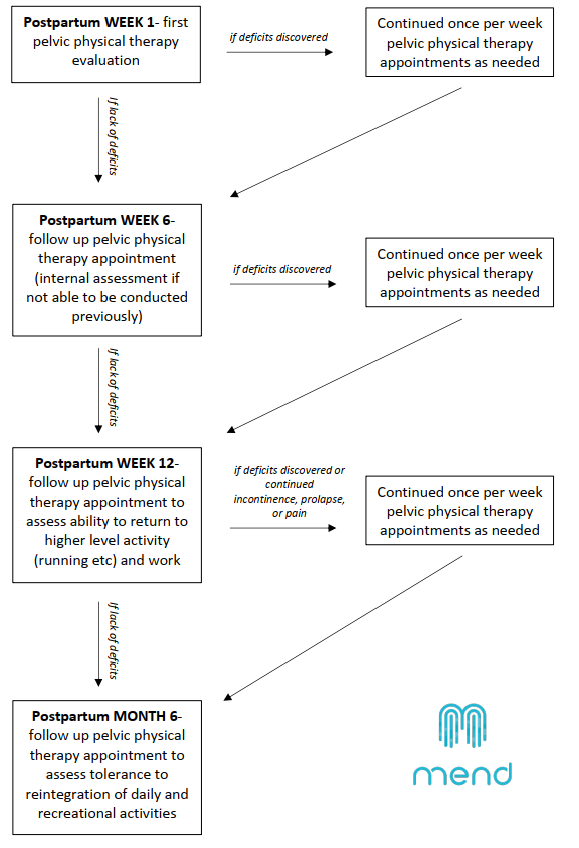In the United States, a standard medical event like a knee replacement warrants 1-2 nights in a hospital and a rehab timeline of 3-6 weeks with a course of frequent physical therapy in that timeline. In an even more common medical event, giving birth, what do women receive? One 6 week follow up appointment.
Postpartum care in the U.S. lags behind many other nations of the world: in Denmark a midwife will call you one day after birth and a medical professional will visit your home in 4 days; in the Netherlands and Belgium a maternity nurse will come provide a minimum of 24 hours of care in your first 8 days postpartum; Swedish mothers receive as many visits from lactation consultants and midwives as needed in their first 4 days postpartum. Most talked about recently is France, with their La rééducation périnéale program where all women automatically receive a referral for postpartum physical therapy. This begins in the hospital and continues for 10 visits of “pelvic rehab” and 10 visits of “abdominal rehab” with a pelvic health physical therapist. It is no surprise that this has led to decreased rates of incontinence, pain, and prolapse, with less prolapse surgeries down the road for French women as compared to American women. Even the World Health Organization recognizes postpartum standard of care to include postpartum visits at 3 days, 1-2 weeks, and 6 weeks after delivery.
In the U.S. about 40% of women don’t attend their 6 week postpartum check up. About 23% of American women are working again within 10 days and 45% working between 10 and 40 days postpartum. Our country is now just beginning to acknowledge our lack of attention to this postpartum time frame, as Congress considers federal paid maternity leave and new American College of Obstetrics and Gynecology (ACOG) guidelines emerge. New ACOG guidelines on postpartum standard of care suggest a check in at 3 weeks in addition to the standard 6 week postpartum check up. This policy has not yet taken hold at many medical facilities.
So how soon should you go see a pelvic health physical therapist after giving birth? Don’t wait 6 weeks! Even if you are not allowed by your OB to have an internal exam until 6 weeks, the earlier the better! In recognizing the success of early care in other countries, going to pelvic physical therapy in your first week postpartum, not waiting for 6 weeks, can be tremendously helpful. Whether you had a successful or traumatic birth, vaginal delivery or c-section, tearing or no tearing, everyone should check in with a pelvic health physical therapist. A thorough exam of your whole body: back, abdomen, pelvic floor and hips by a pelvic health specialized physical therapist can help identify your body’s postpartum needs. Early physical therapy can provide a tremendous amount of education and training of body mechanics and muscle activation that can improve your daily life and help speed up your recovery. Your OB may not mention physical therapy, so you will have to take control of your recovery by asking your OB or seeking out physical therapy on your own. Here at Mend physical therapy in Boulder, our proposed standard of care for EVERY postpartum woman is the following and we hope the entire country will one day follow suit:
Click Here to schedule your next visit with a pelvic health PT at MEND
Optimizing postpartum care. ACOG Committee Opinion No. 736. American College of Obstetricians and Gynecologists. Obstet Gynecol 2018;131:e140–50.
World Health Organization . Maternal, newborn, child and adolescent health . Geneva : WHO ; 2013 .
Klerman J , Daley K , Pozniak A . Family medical leave in 2012: technical report . Cambridge (MA) : ABT Associates Inc ; 2014 .
Haya N, Baessler K, Christmann-Schmid C, et al. Prolapse and continence surgery in countries of the Organization for Economic Cooperation and Development in 2012. Am J Obstet Gynecol 2015;212:755.e1-27.


